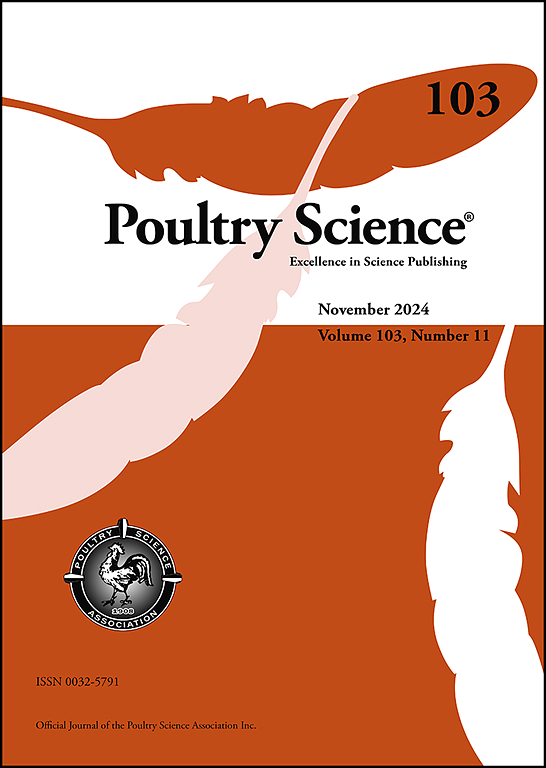Research note: In vitro anticoccidial activity of protein and lipid extracts from the black soldier fly larvae (Hermetia illucens)
IF 3.8
1区 农林科学
Q1 AGRICULTURE, DAIRY & ANIMAL SCIENCE
引用次数: 0
Abstract
Avian coccidiosis, caused by Eimeria spp., is the main parasitic disease in the poultry industry, responsible for high economic costs worldwide. Faced with anticoccidial resistance and societal pressure to reduce inputs in livestock sector, insects could provide a relevant alternative to anticoccidial molecules. The larvae of the black soldier fly (Hermetia illucens) are easy to rear, and can be used to enhance the value of by-products and food waste. Here, anticoccidial activities of protein extracts solubilized in water and lipid extracts solubilized in methanol of H. illucens larvae were evaluated in vitro. Larvae were either blanched and freeze-dried or dried and pressed. The maximum noncytotoxic dose of each extract (20 g/L and 35 g/L of dry matter equivalent) was assessed in avian cells, using a series of tenfold dilutions. The parasite strain Et-INRAE was modified to express nano-luciferase reporter gene. Parasites were pre-treated with extracts. Then, avian cells were infected and incubated in the presence of the extracts. Inhibition of cell invasion and parasite development were assessed by quantification of the luminescence detected. Lipid extracts and protein extracts inhibit Eimeria growth at, at least, a 10⁻⁶ dilution. Further research is required to confirm these results in vivo, assess potential antinutritional effects, and possibly identify active compounds from fractionated extracts to optimize the observed anticoccidial activities.
求助全文
约1分钟内获得全文
求助全文
来源期刊

Poultry Science
农林科学-奶制品与动物科学
CiteScore
7.60
自引率
15.90%
发文量
0
审稿时长
94 days
期刊介绍:
First self-published in 1921, Poultry Science is an internationally renowned monthly journal, known as the authoritative source for a broad range of poultry information and high-caliber research. The journal plays a pivotal role in the dissemination of preeminent poultry-related knowledge across all disciplines. As of January 2020, Poultry Science will become an Open Access journal with no subscription charges, meaning authors who publish here can make their research immediately, permanently, and freely accessible worldwide while retaining copyright to their work. Papers submitted for publication after October 1, 2019 will be published as Open Access papers.
An international journal, Poultry Science publishes original papers, research notes, symposium papers, and reviews of basic science as applied to poultry. This authoritative source of poultry information is consistently ranked by ISI Impact Factor as one of the top 10 agriculture, dairy and animal science journals to deliver high-caliber research. Currently it is the highest-ranked (by Impact Factor and Eigenfactor) journal dedicated to publishing poultry research. Subject areas include breeding, genetics, education, production, management, environment, health, behavior, welfare, immunology, molecular biology, metabolism, nutrition, physiology, reproduction, processing, and products.
 求助内容:
求助内容: 应助结果提醒方式:
应助结果提醒方式:


